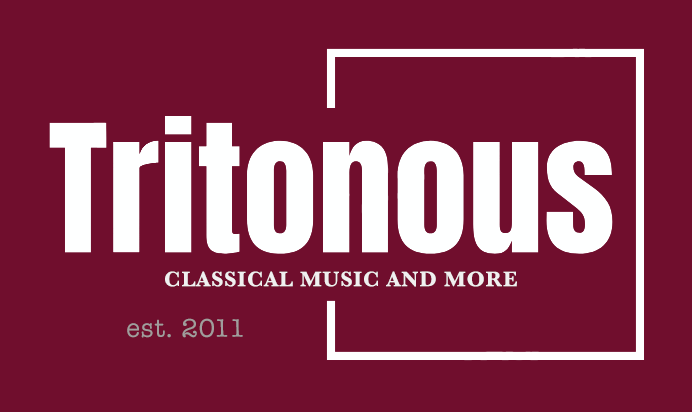 |
| Autograph of the first page of the Johannespassion by Johann Sebastian Bach. |
Bach: St John Passion (1739 version); Patrick Grahl, Rachel Redmond, Jess Dandy, Ashley Riches, Morgan Pearse, the English Concert, Francesco Corti; Wigmore Hall
Reviewed 18 April 2025, Good Friday
A profoundly satisfying account with dramatic urgency complemented by intimacy and tenderness in a performance of the Passion that brought a sense of drama and sophisticated music making
Having given us Bach’s early alternative thoughts, with Solomon’s Knot’s performance of Bach’s 1725 revision of the St John Passion in February [see my review], for Good Friday (18 April 2025), Wigmore Hall presented the familiar 1739 version of the work with Francesco Corti directing the English Concert with German tenor Patrick Grahl (an alumnus of the Leipzig Thomanerchor) as the Evangelist, bass Ashley Riches as Christus, baritone Morgan Pearse as Pilatus and Petrus, and soprano Rachel Redmond and alto Jess Dandy. There were, in fact, nine singers in all, as the above were joined by Amy Wood, Judy Louie Brown, Peter di Toro and Tom Perkins. All except Patrick Grahl sang in the choruses, Redmond, Dandy and Grahl sang the soprano, alto and tenor solos, respectively, whilst Pearse and Riches shared the bass solos between them.
The 13 instrumentalists were led by Nadja Zwiener with Corti directing from the harpsichord and Tom Foster playing the organ. Corti seemed to favour admirably strong harpsichord tone and the instrument contributed significantly to the instrumental timbres (something that does not always happen), though Foster’s organ was, at times, frustratingly discreet. It is worth digging out Paul McCreesh and Gabrieli Consort & Players’ 2000 recording of Bach’s Easter Oratorio and Magnificat in D recorded in the Saxon church of Brand-Erbisdorf (just South of Freiberg) which has a fine baroque organ by a pupil of Silbermann (the organ builder who was a friend of Bach), thus giving us the sort of sound world that Bach would have anticipated; one that is rarely reproduced on the modern concert platform. One intensely practical point I noted was that viola da gamba player Samuel Ng (soloist in ‘Es is vollbracht’) played throughout the evening.
As Andrew Parrott’s ground-breaking 2000 book The Essential Bach Choir [available from Boydell & Brewer] explained, the Lutheran tradition in which Bach wrote often supplemented single singers on each voice line with an extra quartet (or quintet). This was Corti’s approach, one that worked admirably in a space the size of Wigmore Hall and which preserved the vocal ensemble feel of a performance with just solo voices. Parrott’s book includes one intriguing comment that I have never seen or heard implemented, if using an additional quartet of voices then they stand separate from the solo quartet, each group of SATB together and the result must have been an interesting acoustic effect.
We caught Francesco Corti directing the English Concert in Bach in 2023 [see my review] and it was very rewarding to see him back again. His St John Passion began with a long moment of silence, but the work that arose out of this was anything but contemplative and despite the restrictions of having 24 people crammed onto the Wigmore Hall platform, the performance had a vibrant energy and sense of drama, and yes contemplation too.
The opening contrasted the sustained lines from oboes and flutes with the vigour of the string playing, and the singers’ cries of ‘Herr’ were sharp and intense indeed, and the eight singers imbued the whole chorus with intensity and meaning.
Francesco Corti was firmly in charge of the whole performance, directing from the front of the stage, whilst Patrick Grahl sang the role of Evangelist from the middle of the stage. The other soloists sang their recitative from the back of the stage, and came forward to stand near Grahl for the arias. It worked because all were so invested in the music and its meaning that the sense of drama carried. That Ashley Riches is tall helped enormously, his Jesus was vocally and visually commanding.
Grahl made a firm, focused Evangelist, his words at the forefront. At key moments he brought strength and a sharp edge to the narrative, sometimes being positively trenchant. The gospel narrative has strong elements of drama to it and Grahl did not disguise these. Yet there were moments, such as when Peter warmed himself by the fire, when Grahl sang with great beauty of tone. His account of the Evanglist’s final recitative in Part One had an expressive beauty to it, leading directly into Grahl’s account of the aria ‘Ach, mein Sinn’. Here he was intense, making sense of the words, yet his performance and that of the instrumentalists was full of rhythmic snap, sharp articulation and strong tone.
In Part Two, Grahl sang ‘Erwäge, wie sein blutgefärbter Rücken’ with attention to the text and superb long held notes, yet there was also a slightly frustrating sense of reticence. As the Crucifixion approached, Grahl grew increasingly sober, with real gentleness when it came to the passages referring to Jesus’ mother. When it came to the Veil of the Temple, he was vivid, all sharp edges, yet his long closing passages were quietly mesmerising with an intense focus on the words, and his account of the final tenor arioso, ”Mein Herz’ was similarly intense.
Ashley Riches’ Jesus was dramatically engaged, and initially at least, with something of an angry edge to him which was rather interesting. His pronouncements were at first, resonant and definitive, his engagement with the text suggested by the way he made his statements directly to us, though later becoming more inward. Then in Part Two, when before Pilate, his pronouncements became positively gnomic, and he made Jesus’ closing moments profoundly inward. Riches sang the aria ‘Betrachte’ with great beauty of tone and a real sense of contemplation
Soprano Rachel Redmond was brightly joyful and positively engaging, almost soubrette-like in ‘Ich folge dire gleichfalls’ with the flutes contributing to the dance-like atmosphere. In ‘Zerfliesse’ she was tender and moving, her bright tone contrasting wonderfully with the oboe d’amore and the flute, three contrasting yet complementary timbres.
‘Von den Stricken’ was taken at a lively speed, yet Jess Dandy really conveyed the impression that the words meant something to her. She sang with dark, veiled tone yet with vigour in the passagework and forming a lovely contrast in timbres with the oboes. Her aria with viola da gamba obbligato, ‘Es ist vollbracht’ was sober and intense, her voice with its low centre of gravity finely offset by the plangent gamba, and the middle section given with real contrast.
Morgan Pearse’s Petrus was remarkably fierce and bristly, which added to the sense theatricality in the presentation. Then in Part Two, his Pilate was vibrant indeed, helped by the fact that in these scenes, Corti kept the dramatic pressure up so that the long sequence with Pilate and Jesus had a real urgency to it, and towards the end of this scene, Pearse made Pilate intense indeed. His account of ‘Eilt, ihr angefochtnen Seelen’ was wonderfully vibrant with great urgency in the runs, and there was a lovely precision to the chorus entries. In ‘Mein teurer Heiland’ is shapely, vibrant phrases were off set by the gentle beauty of the choral contribution, the whole almost having the feel of a dance.
Peter di Toro made a vigorously incisive Servus, and Rachel Redmond was the alert Ancilla.
Like the individual soloists, the vocal ensemble of eight was fully dramatically involved, the turbae had a striking edge to them, often fast and vivid. Corti was not afraid of taking the chorales fast, they were certainly not gloopily pious as can sometimes happen, and I rather liked his way of sometimes giving the second verses over to just four voices, whilst the opening chorale to Part Two was positively spat out, and the final chorus was beautifully shaped and rather intimate.
There was a passion and sense of dramatic engagement from all concerned in this performance, so that individual solos were complemented by similar engagement from the eight-member chorus. In the recitative, the long scene with Pilate had a sense of urgency that almost demanded it be staged, yet the crux of the Passion was done with intimacy and tenderness.
The blog is free, but I’d be delighted if you were to show your appreciation by buying me a coffee.
Elsewhere on this blog
- Searching for possibilities: composer Noah Max on his four string quartets recently recorded by the Tippett Quartet on Toccata Classics – interview
- Youthful impulse and power: Mozart’s Requiem from National Youth Choir, Sinfonia Smith Square and Nicholas Chalmers – concert review
- Looking at these modern classics anew: Britten’s Canticles at the Barbican with James Way, Natalie Burch & friends – concert review
- This production, will undoubtedly be remembered for years to come: Massenet’s Werther in Paris with Marina Viotti, Benjamin Bernheim & Marc Leroy-Calatayud conducting Les Siècles – opera review
- Compelling & magisterial: Sunwook Kim directs Chamber Orchestra of Europe from the piano in Beethoven’s 3rd & 4th piano concertos – review
- Letter from Florida: Mozart, Verdi, Rossini, Leoncavallo & Mascagni at Sarasota Opera’s Winter Festival – opera review
- An incredible feeling when you get it right; Martin Owen on performing Mozart’s complete horn concertos with Manchester Camerata – interview
- A somewhat eclectic yet satisfying journey: Swiss baritone Äneas Humm explores ideas of freedom in songs by Beethoven, Schubert, Amy Beach, and Joseph Marx – record review
- Remarkable intensity: powerful new 1980s-set Peter Grimes from Melly Still at Welsh National Opera with Nicky Spence – opera review
- Telling a musical story: violinist James Ehnes on the challenges of recording of Bach’s violin concertos with Canada’s NAC Orchestra – interview
- Home










